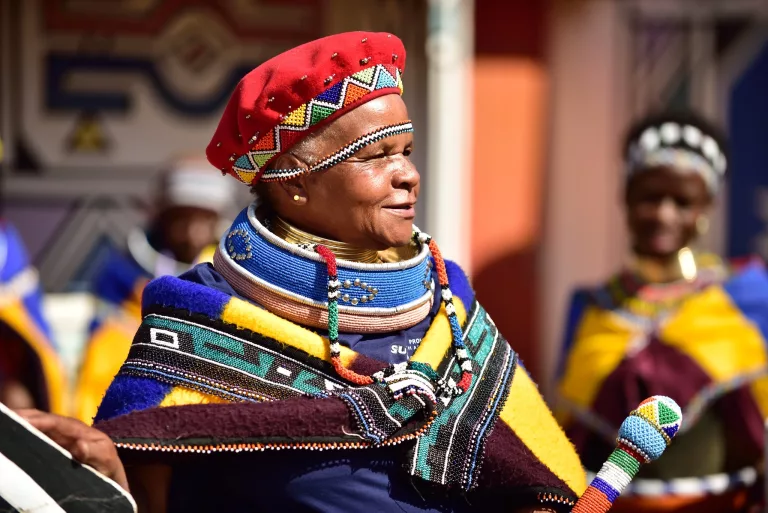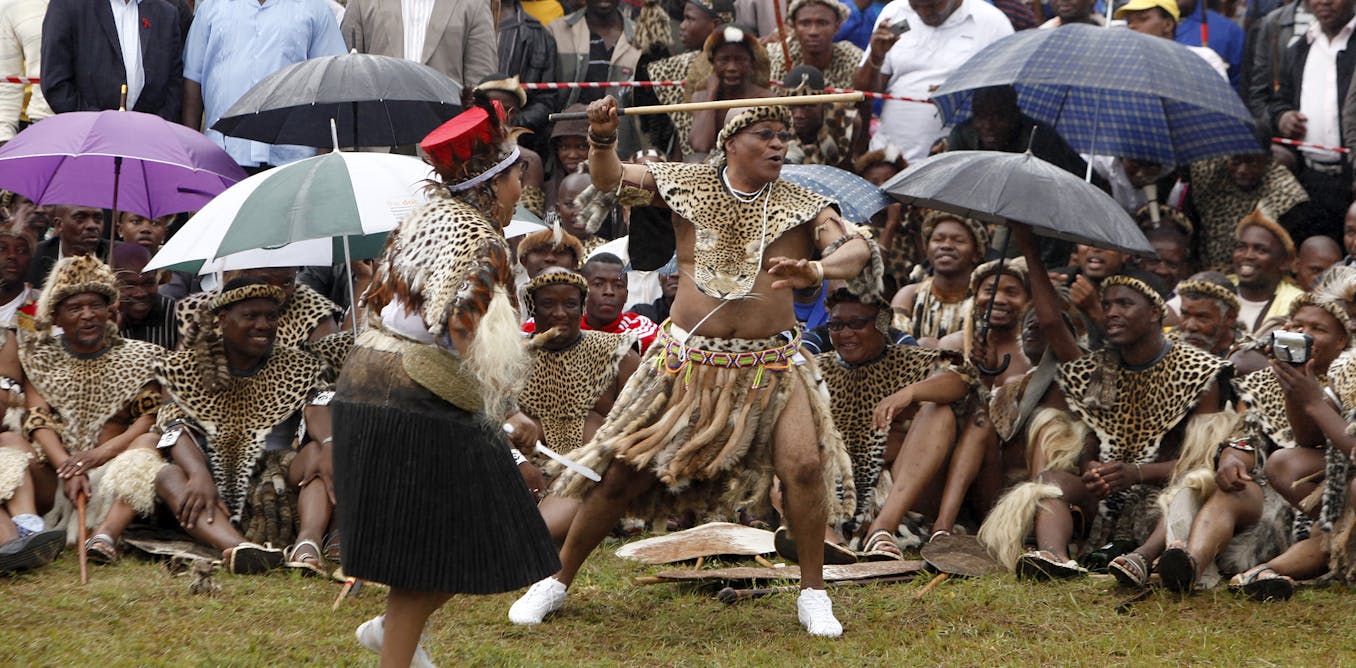Some Known Factual Statements About South African Culture Today
Some Known Factual Statements About South African Culture Today
Blog Article
An Unbiased View of South African Culture Today
Table of ContentsSouth African Culture Today Can Be Fun For AnyoneWhat Does South African Culture Today Mean?Not known Details About South African Culture Today The 10-Second Trick For South African Culture TodayExamine This Report about South African Culture TodayThe Greatest Guide To South African Culture Today
An issue of value in Zambian towns is the passing away of loved ones. All participants of the town put money, time and effort with each other for the interment of the deceased.Music and dancing is an extremely essential element of the Zambian culture. The various tribal devices have their very own dancing types; nevertheless, makishi is typical amongst all people.
Getting The South African Culture Today To Work
When it concerns songs, drums are made use of the most, with a selection of drumming events. In Zambia, bulk of the people are Christian; Protestant and Roman Catholic. There are little teams of Muslims and Hindus, with the remainder complying with local indigenous tribal ideas.

South African heritage and culture is tremendously diverse, and is composed of various teams of individuals who each have their own practices and beliefs. Having such a diversity of individuals and societies is what makes South Africa so distinct. In real sense of the expression, we are a rainbow country.
South Africa has about 3 hundred thousand Portuguese people residing in it. Making it the 7th on the list of nations with one of the most Portuguese people in it outside of Portugal. Portuguese is not only a society, however it is also a language and a race. Portuguese people stem from the country of Portugal in Europe, nevertheless, as a result of Portugal (like many various other nations in Europe) checking out the world and overcoming other nations during the 15th 20th centuries, South Africa has what we call Portuguese South African's living in it.
South African Culture Today for Beginners
Among the prominent attributes of the topography is a plateau that covers almost two thirds of the facility of the nation. The plateau facility climbs toward the southeast, where it culminates in the Drakensberg array, component of an escarpment that separates the plateau from the coastal locations. The Drakensburg includes Champagne Castle, the greatest height in the country.
The area north of the Witwatersrand, called the bushveld, slopes downward from east to west toward the Limpopo River, which develops the worldwide boundary. The western section of the plateau, the middleveld, additionally comes down in the direction of the west and differs in elevation between the highveld and bushveld. Between the Drakensburg and the eastern and southern shoreline, the land comes down to the sea.
Nearer the coast there is a low-lying plain called the eastern lowveld. Southwest of the plateau the nation ends up being considerably extra dry, providing method to the hostile desert of the Great Karroo, verged on the eastern by the reduced, much better sprinkled plateau of the Little Karroo. Separating the dry southerly interior from the sandy littoral of the southern coastline and West Cape is one more variety, the Langeberg.
5 Easy Facts About South African Culture Today Explained
The nation's racially, ethnically, and politically separated history has actually generated national and subnational symbols that still operate as signs of the country, and others symbols that are accepted just by certain teams. The monuments to white settler conquest and political dominance, such as the Afrikaner Voortrekker ("leader") Monolith in Pretoria and the Rhodes Monolith honoring the British colonial empire contractor over here and Cape prime minister Cecil Rhodes, continue to be sectarian symbols.
The initial modern-day occupants were the San ("bushman") hunter-gatherers and the Khoi ("Hottentot") peoples, who herded animals (South African culture today). The San may have been present for hundreds of years and left evidence of their visibility in countless old cave paints ("rock art"). Bantu-speaking clans that were the ancestors of the Nguni (today's amaZulu, amaXhosa, amaSwazi, and vaTsonga peoples) and Tswana-Sotho language teams (today's Batswana and Southern and Northern Basotho) migrated below eastern Africa as early as the fifteenth century

The 2 former republics of the Orange Free State and Transvaal (South African Republic) were established by Afrikaner inhabitants that defeated and dispossessed the Basotho and Batswana. Lesotho would certainly have been by force included into the Orange Free State without the extension of British protection in 1869. The best unification of the nation resulted from the South African War (18991902) between the British and the 2 Afrikaner republics, which decreased the country to wreck at the start of the twentieth century.
Afrikaners traditionally considered themselves the just true South Africans and, while granting full citizenship to all residents of European descent, denied that condition to people of shade till the autonomous change of 1994. British South Africans retain a feeling of social and social link to Great Britain without damaging their identification as South Africans.
Facts About South African Culture Today Revealed
The variety and fragmentation within ethnic collections Full Report and the balance of stress between those groups during the twentieth century prevented interethnic civil conflict. While intergroup stress over resources, privileges, and political dominance continue to be, those disputes are as likely to match Zulu against Zulu as Zulu versus Xhosa or African versus Afrikaner.
From colonial India, British merchants and managers brought the bent metal ornamental roofing systems and slim lace job pillars that still epitomize the outdoor patios of cottages in communities and cities throughout the country. Homes of worship contribute an important building aspect also in the smallest communities. Along with the soaring steeples and traditional stonework of Afrikaans Dutch Reformed churches, Anglican churches, synagogues, mosques, and Hindu temples offer selection to the religious architectural scene.

Slaughtering and the developing of typical cereal beer are necessary in securing the participation and goodwill of the ancestors who are thought about the guardians of great lot of money, success, and wellness. Indian neighborhoods preserve their indigenous cooking customs and apply them on Islamic and Hindu ritual and ceremonial occasions. Afrikaners and Coloured people gather at weekends and special occasions at multifamily barbecues called braais, where community bonds are strengthened.
Since this was the primary financial business of both black Africans and white homesteaders, dispute between those groups fixated description the belongings of grazing land and animals. In 1867, the biggest diamond down payments worldwide were uncovered at Kimberley in the west central area. The wealth from those fields aided fund the exploitation of the best gold reef in the globe, which was found on the Witwatersrand in 1886.
South African Culture Today Things To Know Before You Buy
This led to misconceptions and intentional misrepresentation in the ventures of white settlers and federal government authorities with African principals during the early american period (South African culture today). In the facility of African reserves, some elements of common and chiefly "tribal depend on" land period were preserved, and also in white backwoods, forms of common period were still practiced in locations with African areas
After the autonomous transformation of 1994, programs for land restitution, redistribution, and reform were instituted, however progression has been slow. The white minority still regulates eighty percent of the land. In the wake of agricultural land intrusions in Zimbabwe, the Department of Land Affairs has actually pledged to speed land redistribution.
Report this page